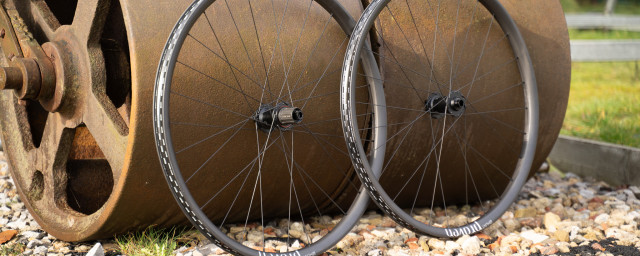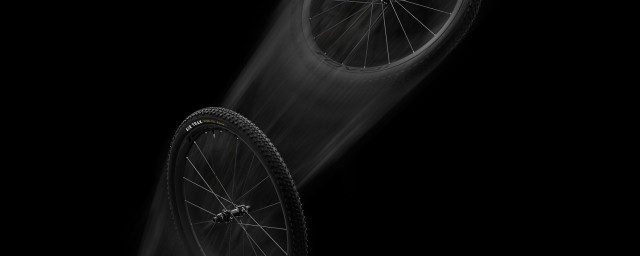Specialized Creo 2 first ride review - a genuine e-gravel bike

Specialized has launched the all-new Creo 2, an e-gravel bike that looks burlier than ever with its new 2.2in tyre clearance and standard dropper post. We've had a chance to take the bike out for a spin on the gravel tracks of southern Portugal to test its capabilities. If you want to know more about the tech details and build options, head over here to read the news piece.
- Best gravel bikes under £1,500 in 2023 - drop-bar machines that won't break the bank
- Gravel bike suspension and dropper posts - do you need them?
- Best gravel wheelsets 2023 - fast and furious off-road wheels
Specialized Creo 2 - Build and aesthetics
My test bike was the Specialized Creo 2 Expert – the middle-tier model of the three available – retailing for £7,500. The bike comes in two colourways: "Black Pearl Birch/speckle", which, in essence, is an off-white with darker speckles or "Metallic Obsidian" which is matte black.
Upon closer inspection, the white colourway reminds me of Stracciatella ice cream with its speckles. And most of all, it looks apt for some gravel riding. The smallest 49 frame size fitted me well at 5'4". The sizes go up to 61, which means there is a relatively wide range available.
The new Creo 2 comes with an updated gravel bike geometry compared to the outgoing models and this means the bike is now slightly taller and the reach and front-centre have been lengthened for more stability and neutral handling. It still has a chunky downtube that houses the battery, while the bottom bracket plays home to the motor – it's not trying to hide its electric bike tendencies.
You won't see fully integrated cabling on the Creo owing to the Future Shock system, so the front end of the bike still has a fair degree of cable faff on display.
Specialized Creo 2 - What's new?
Originally launched in 2019, the Creo has been in dire need of an update. The bike that was launched back then was a bit of an all-rounder and the testing ground for the market's appetite for e-road bikes – something that definitely wasn't the key goal for the American brand at the time.
Specialized is known for developing its components and the motor system is no exception. The motor is at the heart of the Creo 2 and it's now the updated SL 1.2 mid-drive motor we've already seen on some of the brand's e-MTBs - such as the Levo SL.
The internals of the motor remains the same but they've been rejigged inside the new two-part housing to make the system quieter and more efficient. Due to the efforts in reducing the motor noise, including a honeycomb structure on the housing, the SL1.2 is a lot quieter than its predecessor, even if it is a little noisier than competitors such as the TQ Mid Motor drive.
Most modern e-bikes come with a lot of customisation options when it comes to the assistance level and modes and the Creo 2 is no exception with its accompanying Specialized app. The platform that is looking to unify Specialized's multiple apps – including Mission Control – into one, offers a whole host of features from customising the preset modes (Eco, Sport, Turbo), to creating your own and recording your rides. One of the interesting features is also the way it can create a ride profile for you based on your chosen route – meaning you just plug in your ride details and the bike decides the assistance according to that, and tries to make sure you get to your destination without a dead battery.
With more technology usually comes more initial setting up and, with that, often some hassle. My setup with the Specialized app wasn't quite as smooth as it could have been because the test bike was refusing to pair with the app (it was connected to someone else's account). This, if a little unfortunate, did force me to use the Microtune mode on the bike instead.
Microtune is a kind of manual mode of the electric assistance system and allows you to adjust the assistance in 10 per cent increments during your ride. This is handy if you want to fine-tune the assistance rather than having the larger jumps that using the three preset modes would allow.
Microtune, paired with the Road Remote blip controls, was very intuitive to use and although I'd place the remote blips at different locations on my own bike, they were still easier to navigate than pressing buttons on the Mastermind TCU display on the top tube.
Talking of that display - this was my first time testing the latest iteration of the Mastermind Turbo Connect Unit (TCU), and the colour screen with all of its customisation options and clarity was really impressive and helped keep on top of the battery range and ride stats.
As far as the balance of the build goes, the Creo 2 Expert comes with Roval Terra C wheels, SRAM Rival eTAP AXS groupset and chunky 47mm Specialized Tracer Pro tyres. As with all of the new Creo 2 models, the bike is also equipped with a dropper seatpost (Trans-X) and Future Shock 3.0 headset dampening system. The stays also leave plenty of room for wider rubber, as the Creo 2 now can take 2.2in (55mm) tyres comfortably.
The front suspension on this bike, now coming from the third-generation Future Shock system (it's a hydraulic damper placed inside the headset), boasts more durability, serviceability and tunability. And, although I cannot comment on the first two after only a few hours on the bike, the system is definitely more tunable and the 20mm of travel adds to the appeal and capability of the Creo 2 if you enjoy gravel.
Something that has changed from the previous Creos is also the Q-factor (the width of the crankset) which now sits at 169mm instead of 181mm. This is more akin to what we'd see on mountain bikes and definitely adds to a nicer stance on the bike.
Specialized Creo 2 - Ride impressions
The launch of the new Creo 2 took place in Portugal which, unlike the UK at the time, was not enjoying a sunny spell in weather. It was a rather wet experience that made the already humid sea climate a very clammy experience.
The consistent heavy rain also meant that the trails were scattered with washed-out dirt roads and muddy puddles, which were a stark contrast to parts of the route that took us through an area that had been burnt down in one of the many recent wildfires.
Climate and surroundings aside, the now-very-chunky and burly-looking Creo looked like the right weapon for tackling the terrain, especially because the gradients ramped up to 28 per cent.
With the new SL 1.2 motor, Specialized emphasised its goal to make the motor ever more efficient yet quiet and, apart from the whirring noise that very much resembles the sound of something permanently touching your tyre, it is not a noisy system.
Much like on the previous generation Creo, the assistance the SL1.2 system provided was very natural without harsh cutoffs when the speed exceeded the European 25/kph limit. It didn't jerk forward either when the speed dropped and the assistance kicked in again. And even at higher assistance levels, the bike doesn't feel like it's escaping from underneath you.
Although the Creo 2 wasn't sluggish on the roads, it was on the rougher gravel that showed its true nature. With the Future Shock 3.2 softening major bumps and the large-volume tyres keeping everything extra plush, the bike was enjoyable even on the rockiest of descents. Even a 28 per cent gradient seemed to be absolutely no issue for the bike's motor.
The relaxed and more upright geometry of the Creo 2 helps the bike feel secure to control without requiring extreme flexibility and, despite the weight that the mid-drive motor and battery add to the system, the bike feels natural to manoeuvre around corners and at higher speeds. Adding to the planted feeling is also the low bottom bracket, sitting 80mm below the axle line.
And despite the slackened head angle (71-degrees) and increased fork rake (55mm) that add calmness to the bike's overall reactiveness, the steering of the Creo 2 was still pretty quick thanks to the short stem.
Droppers are becoming increasingly popular on gravel bikes and the 50mm drop provided by the Trans-X unit made those steeper descents much more fun when I was able to get my weight further back.
Specialized has given a lot of different scenarios for the battery life and, although it lists the Creo 2's range to be about 120 miles (190km), this is dependent on your riding style, terrain and a variety of other factors. My first test ride was a 45km loop with over 1,100m of elevation and I was very generous with the assistance and nearly drained the battery. It's not bad going though and had I been worried about it (and not carrying a range extender) I could have easily gone for longer.
Specialized Creo 2 - Early verdict
The Specialized Creo 2 builds on what was already a successful e-bike and makes it a serious contender off-road with its wide tyre capacity and dropper post. It trumps the S-Works Turbo Creo SL e-bike with all of its mounting points and I can see how this bike would be a great companion on a bikepacking adventure.
Dave listed the noise of the motor as a negative when he reviewed the S-Works Creo, and I think that even though Specialized has ironed this out, the noise is still more noticeable than on rival systems. This is a small compromise, however, when the system provides such natural and efficient assistance.
When it comes to the pricing, there's no doubting the premium nature of this machine. The cheapest Creo 2 Comp model costs £5,000, my test Expert model comes in at £7,500 and the top S-Works sets you back £12,000. Yes, that is "only" £100 more than the outgoing S-Works Turbo Creo SL but it is still a lot of money for a bike. In comparison, the Scott Solace eRide 10 comes in at £9,199 and the Trek Domane SLR+ 9 eTap costs £12,900, so the Creo is not alone in the category. Apart from the big brand names, there is also the Mondraker Dusty XR that has similar aims of pleasing the rowdier gravel riders with a powerful motor and a lot of capability.
The Specialized Creo 2 Expert is a premium e-bike that delivers a lot of comfort over a range of terrain and will keep your legs fresh even on long and hilly days. If you want an e-gravel bike that can do it all, is efficient and looks neat, the Creo 2 is an appealing option – if you can afford it.

















